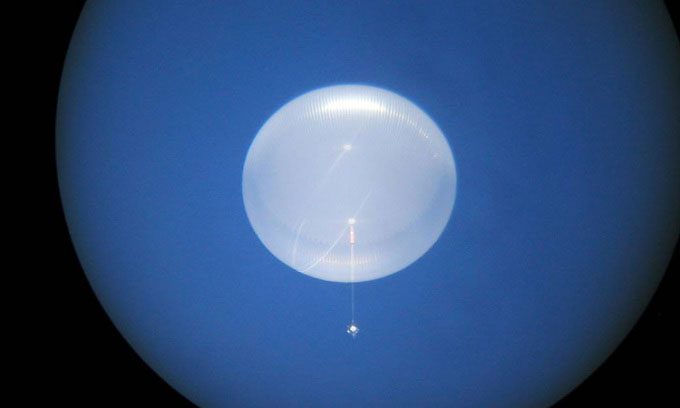“A balloon” is “a bag containing hot air” or “gases in the case of using hydrogen,” which is also referred to as a hot air balloon. It typically has a lower density than the surrounding air and can ascend in the atmosphere due to the buoyant force of Archimedes.
Small balloons used for decoration or children’s toys are often called flying balloons. Larger balloons are used for exploration, sports, scientific remote sensing, telecommunications, and more.
Balloons can be categorized into three main types: those that use fire to heat the air inside and create lift, those that use pure gases (usually helium or hydrogen, which are lighter than air), and hybrid types that use hot air and also have a compartment for helium or hydrogen at the top. Hybrid and pure gas balloons are commonly used for long-distance travel as they require less fuel to maintain flight for extended periods.

Super pressure balloon operating on NASA’s ultra-long duration flight in Antarctica. (Photo: NASA)
Experts have utilized balloons for decades to conduct scientific research. Over time, the capabilities and reliability of balloons have increased significantly. They offer a low-cost solution for scientific research with extended flight durations.
The standard scientific balloons used by NASA are made of polyethylene film. This material is only 0.002 cm thick. These standard balloons are open at the bottom to balance the internal pressure with the surrounding environment. The system includes the balloon, a parachute, and a payload containing equipment for conducting scientific measurements.
While traditional standard balloons have flight times ranging from several hours to several days, NASA’s long-duration balloons often travel across continents or circle the globe. Their flights can last up to three weeks.
Additionally, NASA has also developed ultra-long duration balloons. These balloons are made from advanced materials and use a design similar to a pumpkin to facilitate flights lasting up to 100 days. They are completely sealed and pressurized to maintain a constant altitude day and night. The payload of ultra-long duration balloons includes solar power systems, radio transceivers, computers, batteries, and other systems necessary for scientific experiments.
Balloons are launched by filling them partially with helium and releasing them with a suspended payload underneath. As the balloon ascends, the helium expands and fills the inside.
After the scientific measurements are completed, the control station sends a radio command to detach the payload containing the equipment from the balloon. The payload descends gently to the ground thanks to a parachute and can then be recovered and reused. Detaching the payload creates a significant tear in the balloon, releasing any remaining helium. The balloon also falls to the ground, where it can be retrieved and discarded.


















































